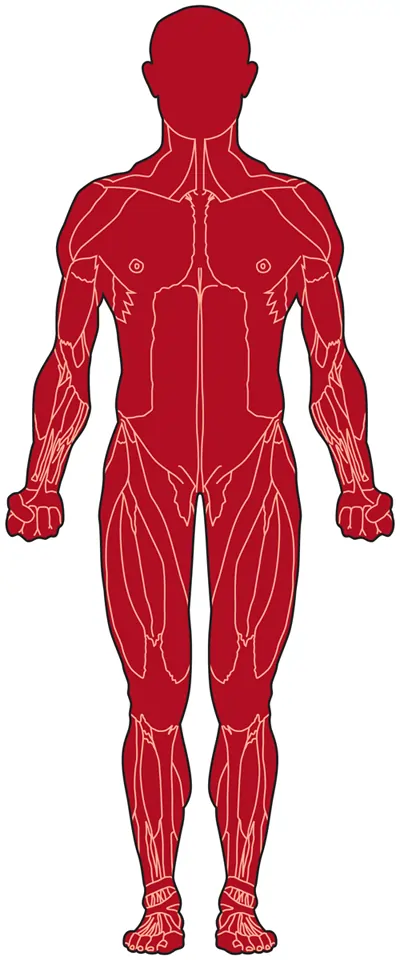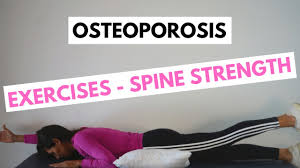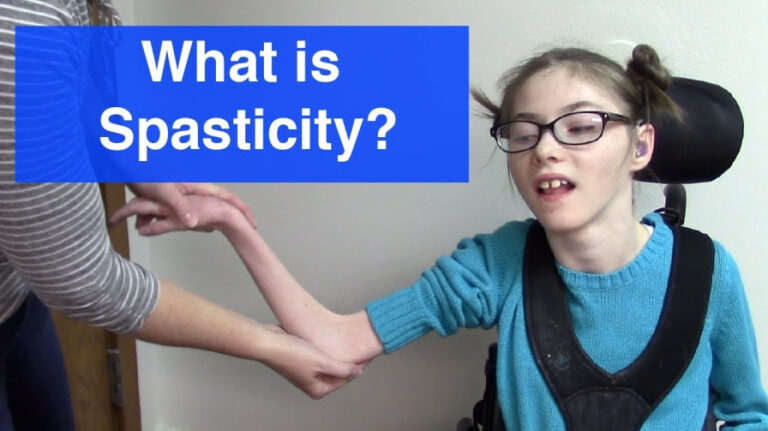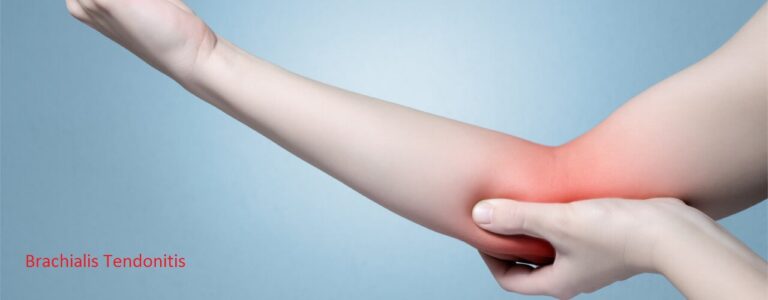Congenital muscular dystrophy
Congenital muscular dystrophy (CMD) refers to a group of muscular dystrophies which is autosomal recessively-inherited muscle diseases that become apparent at or near birth around age 2.
They are a group of heterogeneous disorders characterized by muscle weakness and the different changes on muscle biopsy that ranges from myopathic to dystrophic due to the age at which the biopsy takes place.
Table of Contents
Symptoms
Congenital muscular dystrophies are often seen between birth and age 2. This is when parents start to notice about their child’s motor functions and muscle control are not developing as they should.
This weakness or defect, usually first identified as hypotonia which means a lack of muscle tone can make an infant looks “floppy.” Later, infants and toddlers may be slow to meet motor milestones like walking, rolling, sitting up, or may not meet some milestones at all.
The lifespan of individuals with this type also varies, which is depending on the symptoms. Some patients with CMD die in infancy while others live until adulthood.
Symptoms may vary from mild to severe, rates of progression and, degrees of severity, which may include:
- Inability to sit or stand without support
- Muscle weakness
- Poor motor control
- Foot deformities
- Scoliosis
- Respiratory problems
- Trouble swallowing
- Speech problems
- Vision problems
- Intellectual impairment
Types
CMD with cardiomyopathy
Weakness beginning within the one year; slowly progressive; delayed motor milestones; walking achieved in adolescence; contractures of the joints, neck, and spine; progressive cardiomyopathy means cardiac muscle deterioration beginning ages 5-12; cardiac rhythm abnormalities
CMD with adducted thumbs, ophthalmoplegia, and intellectual disability
A rare form of CMD with inward-drawn thumbs, lack of muscle tone, contractures means permanent shortening of the toe joints, weakness, delayed walking, paralysis of eye muscles, and intellectual disability
CMD with central nervous system atrophy and absence of large myelinated fibers in the peripheral nervous system
Onset in the infant period; weakness, poor motor function, lack of muscle tone, respiratory failure; the reduction of the size of major parts of the brain; joint contractures
CMD with cerebellar atrophy A nonprogressive form of CMD with the diminished size of the cerebellum, a part of the brain involved in motor control is onset by 7 months, lack of muscle tone, weakness, delayed motor milestones, lack of coordination of movements, difficulty speaking, intellectual disability, and involuntary eye movements
CMD with desmin inclusions
The onset at birth or during early infancy, weakness and low muscle tone, small muscles, cardiac abnormalities, joint contractures, respiratory impairment
CMD with integrin alpha 7 mutations
Early-onset with low muscle tone, walking at age 2-3, respiratory involvement, weakness
CMD with joint hyperlaxity
Weakness, abnormally flexible joints, poor muscle tone, and contractures since born; slowly progressive; walking at 1-3 years; a reduced respiratory capacity, abnormal flexibility in some joints and contractures in others, spinal curvature possible
CMD with familial junctional epidermolysis bullosa
The onset of poor muscle tone or weakness along with skin blistering at birth; skin blisters with injury and heat, many need a wheelchair by age 10; respiratory impairment, elbow contractures, cardiomyopathy, diminished brain size
CMD with muscle hypertrophy and respiratory failure known as MDC1B
An early-onset weakness with respiratory failure and, involvement of the diaphragm, generalized muscle enlargement, contractures in ankles, spinal rigidity
CMD with muscle hypertrophy known as MDC1C
Low muscle tone and weakness; patient can sit without support but walking not achieved; some muscles enlarged, especially calf muscles; other muscles small, especially in shoulder area; joint contractures in some; mild intellectual disability or speech problems
CMD with muscle hypertrophy and severe intellectual disability known as MDC1D
Global developmental delay, contractures of ankles and elbows, some muscles enlarged, profound intellectual disability
CMD with the myasthenic syndrome
A rare form of CMD with onset by the time of birth; lack of muscle tone, weakness; slowly progressive; respiratory involvement possible; most survivors able to walk as children and adults
CMD with early spinal rigidity
Onset by birth to 1 year or during the first decade of life; early-onset poor muscle tone, weakness; respiratory capacity reduced; early improvement, followed by stabilization or slow decline; spinal rigidity begins at ages 3-7, with limited ability to flex the neck and spine; spinal curvature beginning ages 4-12 and progressing; minor cardiac abnormalities, joint contractures
Walker-Warburg syndrome: MDDGA type
Early-onset weakness with brain and eye abnormalities; intellectual disability
Santavuori muscle-eye-brain disease
Low muscle tone at birth; slow development; intellectual disability; eye abnormalities
Diagnosis
Diagnosis may include:
- Complete medical history and physical examination, including a family history of any neuromuscular disease
- Genetic testing: Examines individual genes to look for abnormalities known to cause congenital muscular dystrophy
- Electrodiagnostic tests (EMG/NCV): Our neuromuscular neurologists assess muscle and nerve function using a machine that measures electrical signals in individual muscles and nerves.
- Imaging studies: ultrasound or magnetic resonance imaging (MRI).
- Biopsy: Muscle and nerve cells are examined under a microscope.
- Laboratory tests: Tests may be performed to check muscle enzymes, as well as other clues to diagnosis.
life span
The congenital muscular dystrophies are a collection of disorders that are present at born along with other genetic disorders.
The life span or expectancy of patients with congenital muscular dystrophy is highly variable depending on the type and can change as a result of the specific genetic disorder that is inherited.
Some types are progress slowly while others may shorten the life span.
Treatment
General care
The physician should meet with the family of a child with a diagnosis of CMD.
The first meeting with the family includes five components:
diagnosis, prognosis, recurrence risk, treatment plan, and family support and community resources.
The treatment has a multidisciplinary approach and include:
- Palliative care specialist
- Pulmonologists
- cardiologists
- Ophthalmologists
- Physiotherapy treatment
- Orthopedists
Cardiac or heart care
Cardiac symptoms sometimes are atypical, especially in young patients, and can start late in the course of the disease.
Cardiac investigations such as cardiac screening should be systematically performed during follow-up examinations. the frequency of it depends on the type of CMD and the level of cardiac involvement.
severe heart arrhythmia can lead to sudden death, implantation of a defibrillator should be involved.
Respiratory care
In some, breathing problems may be severe from birth and all types of CMD can lead to the development of respiratory failure, weak crying, ineffective cough, weight loss, choking on feedings, and repeated infections all can be signs of respiratory distress.
The guidelines recommend that noninvasive ventilation can give particularly at night before respiratory distress becomes acute.
Aggressive treatment of acute respiratory tract infection is essential because these infections are the most common cause of hospital admissions and death in patients with CMD.
Gastrointestinal, oral, and nutritional care
The treatment of feeding and swallowing problems includes adaptations to seating and positioning, safe swallowing techniques, supports for self-feeding, and food texture modification. If these managements are insufficient, gastrostomy tube feeding can be inserted.
Facial malformation and Muscle weakness can lead to speech problems in some. For that oral motor therapy and exercises help improve speech, but they may help resolve feeding problems.
Orthopedics and rehabilitation
Orthopedic symptoms like joint contractures, foot and spine deformities, scoliosis, hip dislocation, a rigid spine, and joint hypermobility are some of the most common for CMD.
A conservative and preventive approach to orthopedic symptoms is important.
Spinal surgery is helping to improve the quality of life of older children with progressive spinal deformity. Great care is taken to minimize the risks of surgical treatment, so postoperative multidisciplinary care is essential.
Physiotherapy exercises
Physiotherapy is important in the reduction of contractures and maintaining range of motion. Maintaining proper positioning, Regular stretching, and supports such as orthotics and braces are generally better than surgical management. ROM exercises for all joints Speech therapy
Palliative care is associated with the developmental, emotional, spiritual, and physical aspects of caring for a patient with a life-threatening disease. Problems that can be addressed by palliative care include depression, pain, fatigue, anger, anxiety, and other mental and emotional difficulties.







